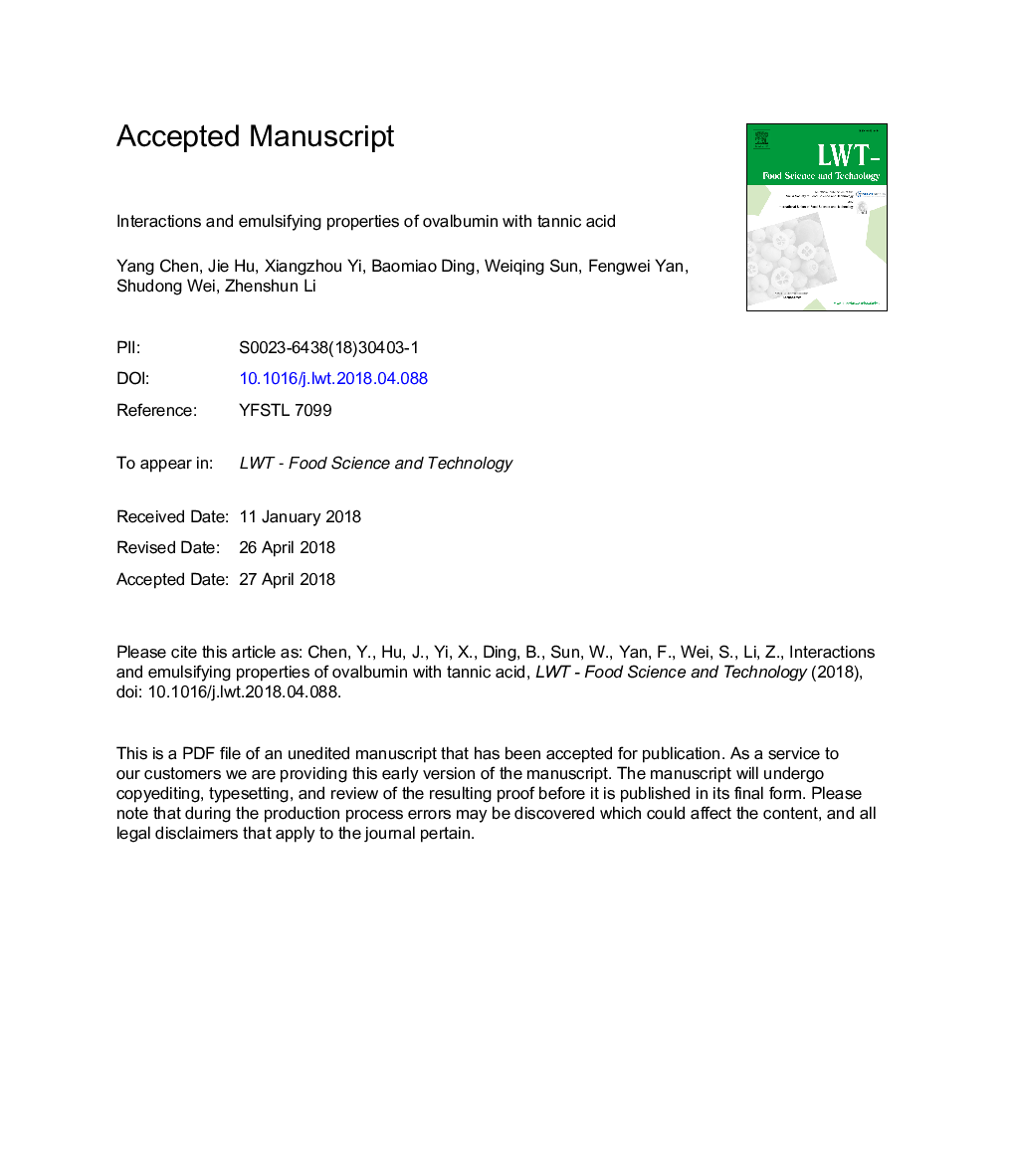| Article ID | Journal | Published Year | Pages | File Type |
|---|---|---|---|---|
| 8891132 | LWT - Food Science and Technology | 2018 | 33 Pages |
Abstract
Ovalbumin (OVA) is a good emulsifier; however, its emulsifying properties are easily affected by food components. In this study, tannic acid (TA) was used as a model polyphenol to interact with OVA. The OVA-TA complexes were characterized with circular dichroism, dynamic light scattering and interfacial tension measurements. The emulsions stabilized by OVA and OVA-TA were analysed by droplet size measurements. The results indicated that TA could bind well with OVA. Generally, the surface activity of OVA decreased after binding with TA due to the sheltering of the hydrophobic groups of OVA, decreasing the emulsion capacity of OVA. However, the particle size and interfacial tension of the OVA-TA complexes at pH 5.0 were significantly smaller than those of free OVA due to reduced aggregation from increased electrostatic repulsions. Therefore, the stabilities of the emulsions containing TA were improved at pH values near the isoelectric point (pH 4.75) of OVA. Heat treatment decreased the particle sizes of OVA-TA. On the other hand, heating could increase the interfacial tension, decreasing the emulsifying properties of OVA. Our work provides new insights into the influence of polyphenols on the emulsion efficiency of OVA.
Related Topics
Life Sciences
Agricultural and Biological Sciences
Food Science
Authors
Yang Chen, Jie Hu, Xiangzhou Yi, Baomiao Ding, Weiqing Sun, Fengwei Yan, Shudong Wei, Zhenshun Li,
